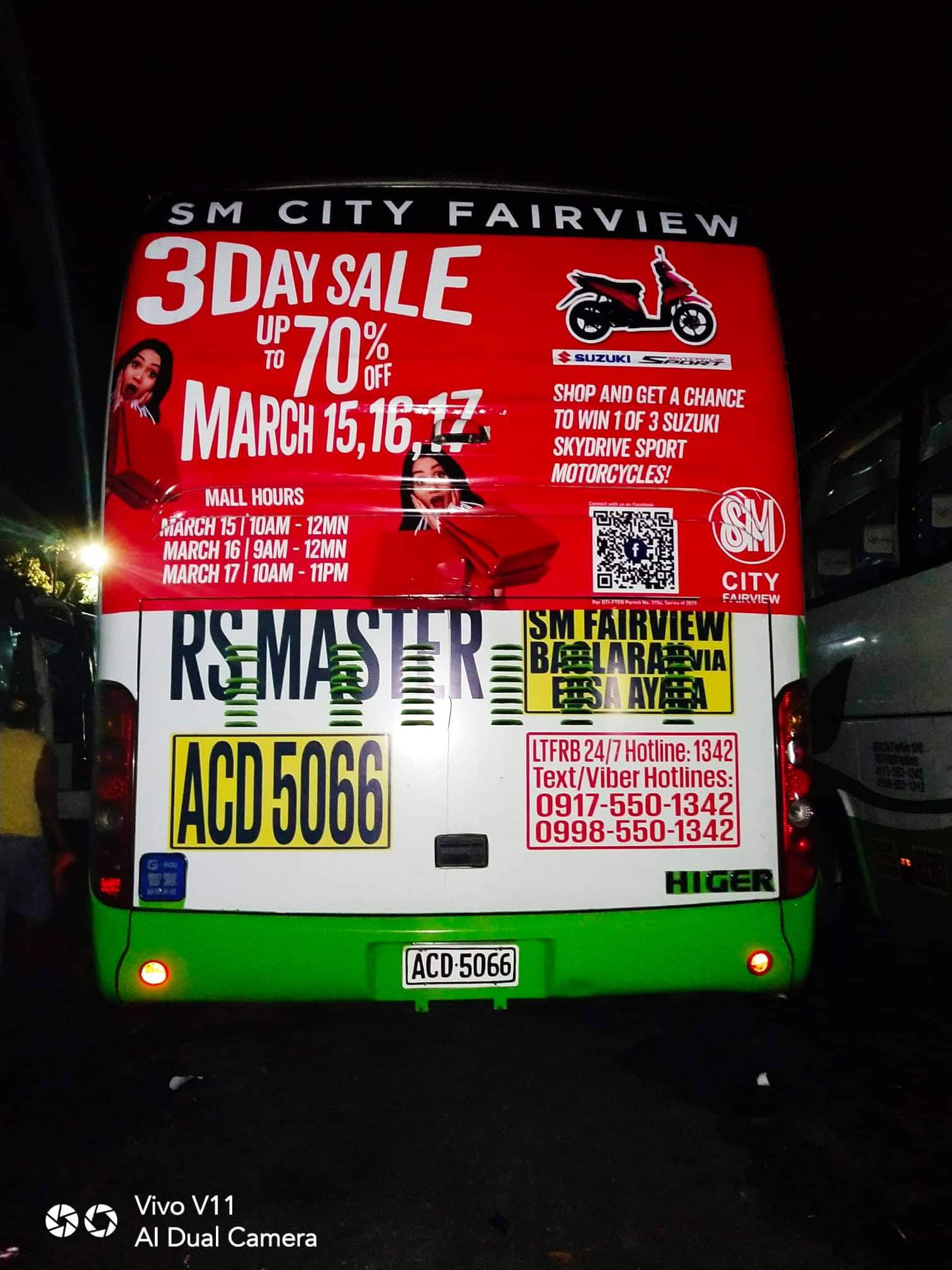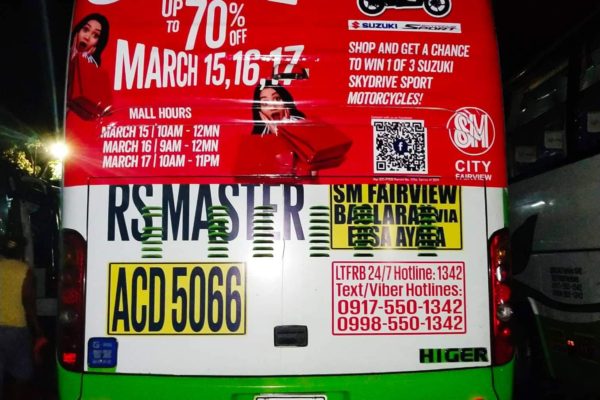Boost Your Service with Transit Advertising Philippines
Boost Your Service with Transit Advertising Philippines
Blog Article
Exploring the Impact and Efficiency of Transit Advertising in Urban Advertising Strategies
Transit advertising and marketing has actually come to be a significant part of metropolitan advertising and marketing methods, taking advantage of the unique dynamics of mass transit settings. Its capability to reach a diverse and wide target market provides brand names with a chance to create significant links through regular exposure. Nonetheless, with the quick evolution of modern technology and moving consumer actions, the landscape of transportation advertising is undertaking remarkable changes that warrant closer evaluation. What ramifications do these trends hold for marketers seeking to harness the full potential of this medium?
The Increase of Transit Marketing
As city populaces continue to swell, the need for innovative marketing services has actually caused the surge of transit marketing as a critical component of urban marketing methods. This form of advertising and marketing leverages mass transit systems-- such as subways, buses, and trains-- to reach a varied target market in densely booming locations. The performance of transportation advertising hinges on its capacity to involve customers throughout their everyday commutes, an often neglected yet critical time for brand messaging.
With cities becoming increasingly overloaded, standard advertising and marketing spaces are coming to be limited and less effective. Transit marketing uses a dynamic choice, allowing brand names to display their messages in high-traffic locations where possible consumers are regularly subjected to the ads. Additionally, as city residents increasingly count on public transportation, the relevance and presence of transit advertising have expanded substantially.
Additionally, technological developments have actually improved the sophistication of transit advertising and marketing, allowing for digital displays and interactive projects that can record customer attention a lot more successfully than fixed advertisements. As an outcome, transportation advertising is not only an economical choice however likewise an important method for brands looking for to connect with metropolitan customers in an impactful and memorable manner.
Secret Advantages of Transit Advertising And Marketing
The performance of transportation advertising and marketing is emphasized by its diverse advantages, making it an invaluable device for metropolitan marketing experts. One of the key benefits is its comprehensive reach; transportation systems serve countless travelers daily, allowing brand names to attach with a varied audience in high-traffic environments. This presence enhances brand name recognition, making sure that advertisements are seen repetitively by commuters.

Additionally, transit marketing is cost-effective contrasted to various other media, supplying a lower expense per impression while maintaining high visibility. The adaptability of advertisement layouts, from bus covers to electronic display screens, permits imaginative and impactful projects that can adjust to transforming market demands.
Customer Actions Insights
A significant portion of customer behavior is affected by the prevalent nature of transit advertising in metropolitan environments. This type of advertising captures the interest of varied demographics, engaging customers throughout their daily commutes.
Study indicates that transportation marketing can stimulate emotional responses, bring about enhanced brand name affinity. Consumers commonly link the experience of commuting with my explanation particular brands, producing a long-term impact that influences investing in choices. Additionally, the frequency of exposure to transportation advertisements cultivates experience, which is a vital factor in customer trust and commitment.

Additionally, the public aspect of public transport adds to this phenomenon; as people share rooms, they are a lot more most likely to go over and advise brand names they experience. Hence, transportation advertising and marketing not just gets to customers but also stimulates social interactions that reinforce brand messaging. Understanding these behavioral insights permits marketing experts to customize their strategies efficiently, making certain that their projects reverberate with target market in the metropolitan landscape.
Study and Success Stories
Effective application of transportation marketing strategies is exhibited through numerous study that highlight its efficiency in urban marketing. One remarkable example is the partnership in between additional reading a prominent drink company and a major city's public transportation system. The campaign utilized bus covers and interior posters, resulting in a 30% rise in brand acknowledgment and a 15% rise in sales within the target group over three months.
Another successful instance entailed a neighborhood dining establishment chain that utilized train station advertising and marketing to bring in commuters. By creating aesthetically striking ads that offered timed promos, the restaurant experienced an uptick in foot web traffic, with an excellent 25% rise in lunch hour customers.
Additionally, a city's tourism board released a transit project showcasing neighborhood attractions with bus quit screens and metro ads. The initiative caused a significant increase in traveler sees, as reported by a 40% boost in inquiries at visitor centers.
These study underscore the adaptability and potential of transportation advertising and marketing to engage city audiences efficiently, helpful site demonstrating that tactical positionings can yield substantial rois and enhance brand visibility in busy city settings. - Transit Advertising Philippines
Future Patterns en route Marketing
As metropolitan landscapes proceed to advance, so also does the realm of transit advertising and marketing, which is poised to embrace innovative technologies and techniques. One substantial fad is the combination of electronic advertising displays right into public transit systems. These vibrant screens enable real-time updates and targeted content, enhancing audience interaction. Additionally, the adoption of programmatic advertising is expected to obtain momentum, making it possible for marketers to take advantage of data analytics for more accurate target market targeting based on time, location, and market understandings.
Another arising trend is the use of enhanced truth (AR) and virtual truth (VR) experiences within transportation advertising and marketing. These immersive technologies can astound travelers, transforming mundane trips into interactive brand name experiences. Furthermore, sustainability is becoming increasingly crucial; environmentally friendly advertising and marketing products and methods are most likely to acquire traction, mirroring the growing customer need for business social obligation.
Finally, the rise of mobile connectivity will help with higher assimilation between transportation advertising and marketing and personal tools. Advertisers can develop smooth cross-channel experiences, enabling immediate interaction and involvement with prospective clients. Collectively, these trends suggest a transformative future for transit marketing, using new avenues for brands to attach with city target markets.
Conclusion
Transportation marketing has actually established itself as a substantial component of urban advertising approaches, demonstrating considerable performance via boosted brand name exposure and consumer engagement. The capability to adjust messages to particular demographics, coupled with the innovative use of innovation, positions transportation advertising as a driving force in contemporary advertising (Transit Advertising Philippines). As metropolitan environments remain to evolve, the future of transportation marketing promises further advancements, ensuring its relevance and effect in forming customer perceptions and actions in urban landscapes
As urban populations proceed to swell, the demand for ingenious marketing options has led to the increase of transportation marketing as a critical part of urban advertising and marketing methods.A substantial section of consumer habits is affected by the pervasive nature of transit advertising and marketing in city environments. Jointly, these fads suggest a transformative future for transportation marketing, offering new opportunities for brand names to attach with urban audiences.
Transit advertising has developed itself as a substantial part of metropolitan marketing techniques, demonstrating substantial performance through enhanced brand visibility and customer interaction. As urban environments proceed to evolve, the future of transit advertising assures further advancements, guaranteeing its relevance and effect in shaping consumer perceptions and habits in urban landscapes.
Report this page